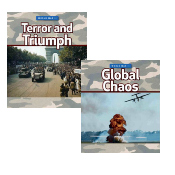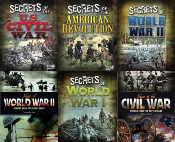|
|
U.S. Warplanes - Set of 6Code: USWAR101
Add to Wish List
Notify me when this is back in stock. Quantity in Basket:
None
Shipping Weight: 5.26
ISBN: 9780823938711
Format: Reinforced Hardcover
Publisher: Rosen
Series: U.S. Warplanes
Copyright: 2003
Ages: 12 to 14
Size: 7¾ X 10¾
Total Pages: 48
For Grades: 6 to 8
Accelerated Reader: Yes
List Price: $181.50
Publisher's School and Library Price: $136.20
Your Price: $40.86
Savings: $95.34 (70%)
NO LONGER AVAILABLE
|




